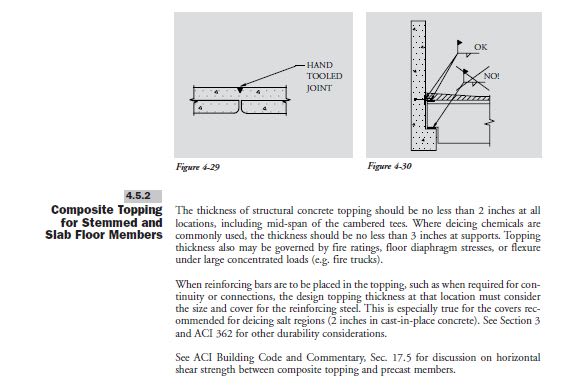I have a project where a client wants to adjust the grading/slopes inside one area of a precast parking garage to meet ADA accessibility slope limits. To achieve this they are proposing raising the deck surface by anywhere from 0" - 4". I still need to check if this extra weight of concrete on top of the twin tees will work or if the structure will need to be reinforced. Assuming it did work, I'm wondering how this could actually be achieved because I'm dealing with pre-topped twin tees in this case. See image below for an example elevation view of how the top of deck surface needs to be adjusted (idealizing the twin tee surface as level). Where the extra topping thickness tapers down to 0", I'm assuming they need to demo out at least 2" of existing twin tee deck to be able to pour back a minimum 2" thick new concrete layer for this new surface.
Has anyone ever done this before? This case is for an area that is approximately 6,000 sf (approximately 14 twin tees with the majority of their span needing elevation adjustments). I know I can run some checks for the extra weight on the structure. However, the things I'm worried about are:
1. Can some thickness of a pre-topped twin tee deck be demoed away temporarily (2" max out of a 4 3/4" thick flange)? I'm guessing the contractor may need to shore the tees in this case because the tee will at least temporarily be weaker.
2. The extra demoing away is necessary that way the new topping layer is at least 2" thick, is that correct? Does anyone know of a concrete/grout that can instead taper down to 0" and will be durable enough for vehicle traffic?
3. If they roughen the surface of the deck that will receive the new topping layer, including the exposed surface after the demoing away, is it safe to assume that this new layer of concrete will act compositely with the precast twin tee, so it will be at least as strong in bending as it originally was (assuming matching concrete strengths)? Not sure how weak that shear flow surface is compared to the original monolithic flange.

Has anyone ever done this before? This case is for an area that is approximately 6,000 sf (approximately 14 twin tees with the majority of their span needing elevation adjustments). I know I can run some checks for the extra weight on the structure. However, the things I'm worried about are:
1. Can some thickness of a pre-topped twin tee deck be demoed away temporarily (2" max out of a 4 3/4" thick flange)? I'm guessing the contractor may need to shore the tees in this case because the tee will at least temporarily be weaker.
2. The extra demoing away is necessary that way the new topping layer is at least 2" thick, is that correct? Does anyone know of a concrete/grout that can instead taper down to 0" and will be durable enough for vehicle traffic?
3. If they roughen the surface of the deck that will receive the new topping layer, including the exposed surface after the demoing away, is it safe to assume that this new layer of concrete will act compositely with the precast twin tee, so it will be at least as strong in bending as it originally was (assuming matching concrete strengths)? Not sure how weak that shear flow surface is compared to the original monolithic flange.


